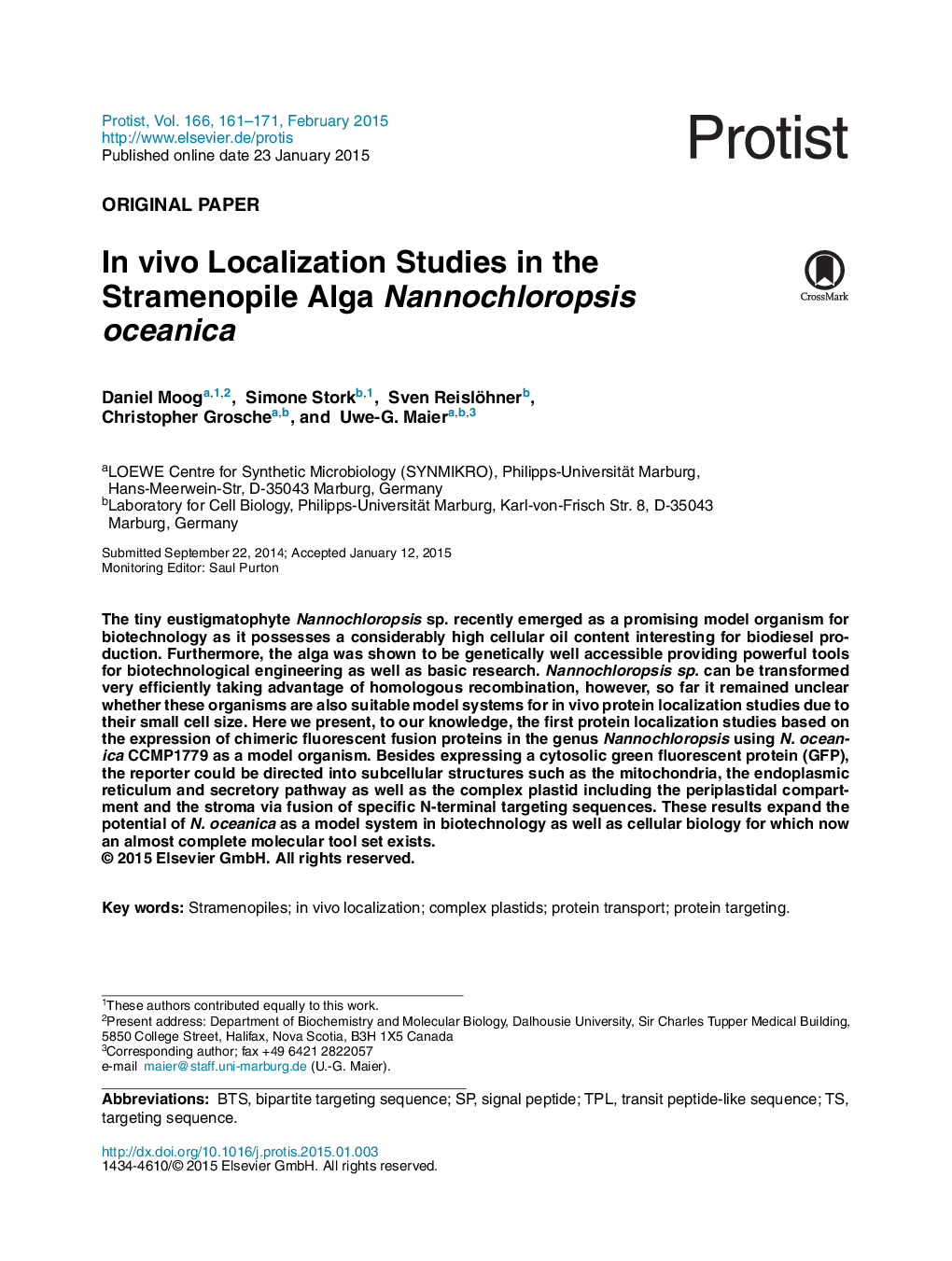| Article ID | Journal | Published Year | Pages | File Type |
|---|---|---|---|---|
| 10879063 | Protist | 2015 | 11 Pages |
Abstract
The tiny eustigmatophyte Nannochloropsis sp. recently emerged as a promising model organism for biotechnology as it possesses a considerably high cellular oil content interesting for biodiesel production. Furthermore, the alga was shown to be genetically well accessible providing powerful tools for biotechnological engineering as well as basic research. Nannochloropsis sp. can be transformed very efficiently taking advantage of homologous recombination, however, so far it remained unclear whether these organisms are also suitable model systems for in vivo protein localization studies due to their small cell size. Here we present, to our knowledge, the first protein localization studies based on the expression of chimeric fluorescent fusion proteins in the genus Nannochloropsis using N. oceanica CCMP1779 as a model organism. Besides expressing a cytosolic green fluorescent protein (GFP), the reporter could be directed into subcellular structures such as the mitochondria, the endoplasmic reticulum and secretory pathway as well as the complex plastid including the periplastidal compartment and the stroma via fusion of specific N-terminal targeting sequences. These results expand the potential of N. oceanica as a model system in biotechnology as well as cellular biology for which now an almost complete molecular tool set exists.
Related Topics
Life Sciences
Agricultural and Biological Sciences
Agricultural and Biological Sciences (General)
Authors
Daniel Moog, Simone Stork, Sven Reislöhner, Christopher Grosche, Uwe-G. Maier,
